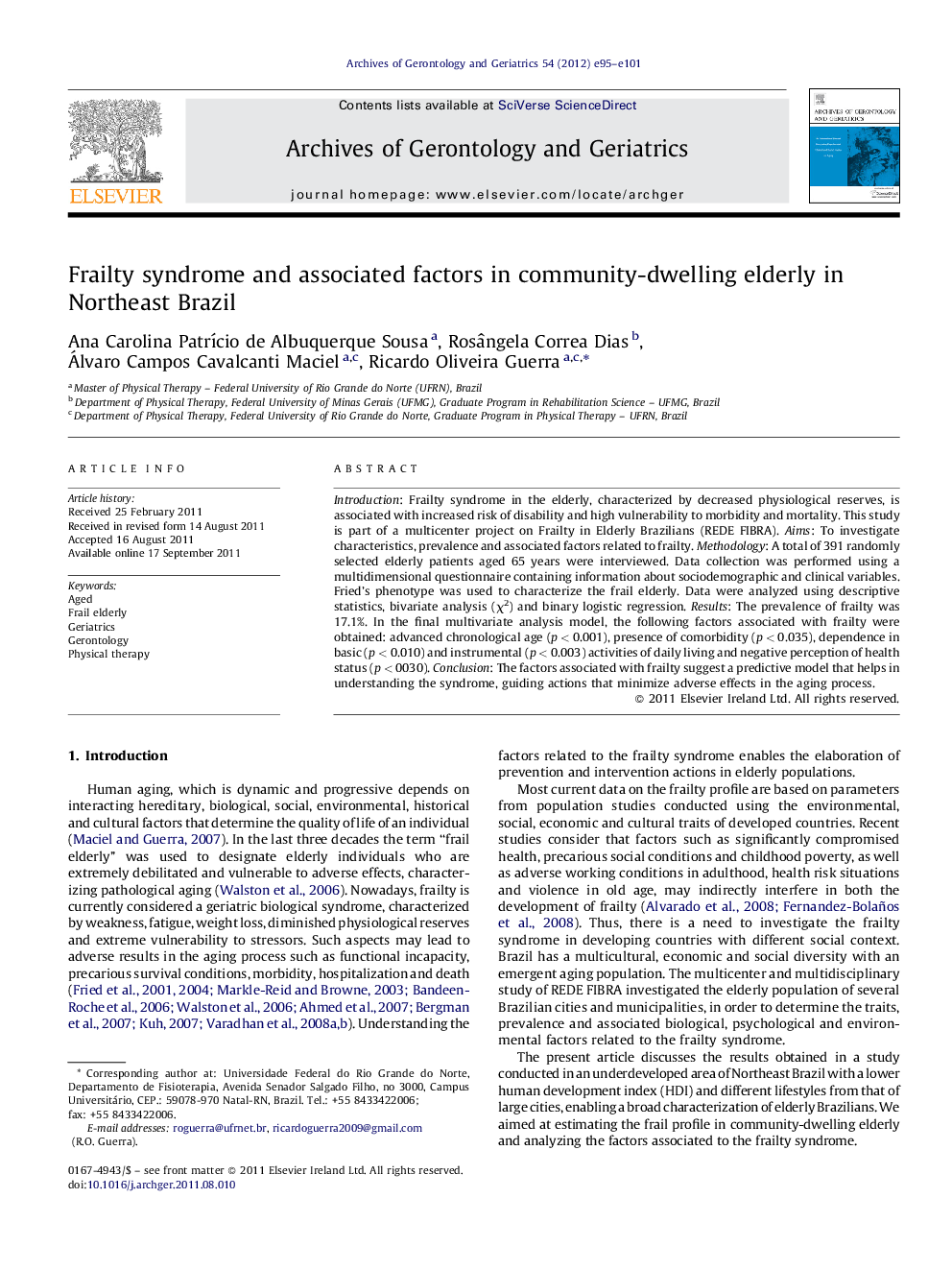| Article ID | Journal | Published Year | Pages | File Type |
|---|---|---|---|---|
| 1903006 | Archives of Gerontology and Geriatrics | 2012 | 7 Pages |
Introduction: Frailty syndrome in the elderly, characterized by decreased physiological reserves, is associated with increased risk of disability and high vulnerability to morbidity and mortality. This study is part of a multicenter project on Frailty in Elderly Brazilians (REDE FIBRA). Aims: To investigate characteristics, prevalence and associated factors related to frailty. Methodology: A total of 391 randomly selected elderly patients aged 65 years were interviewed. Data collection was performed using a multidimensional questionnaire containing information about sociodemographic and clinical variables. Fried's phenotype was used to characterize the frail elderly. Data were analyzed using descriptive statistics, bivariate analysis (χ2) and binary logistic regression. Results: The prevalence of frailty was 17.1%. In the final multivariate analysis model, the following factors associated with frailty were obtained: advanced chronological age (p < 0.001), presence of comorbidity (p < 0.035), dependence in basic (p < 0.010) and instrumental (p < 0.003) activities of daily living and negative perception of health status (p < 0030). Conclusion: The factors associated with frailty suggest a predictive model that helps in understanding the syndrome, guiding actions that minimize adverse effects in the aging process.
